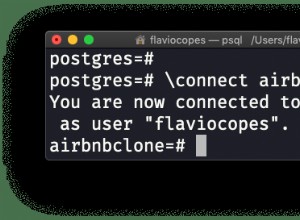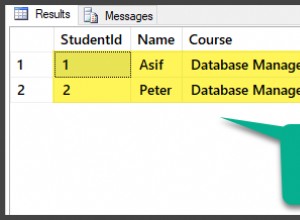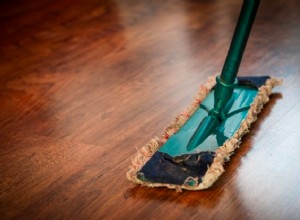Ich verwende Folgendes, um Bilder aus JPA (Hibernate Backed) zu rendern. Beispiel verwendet das struts2-conventions-plugin, in der Ergebnistyp-Annotation „stream“ steht nur die Ansicht:
package com.kenmcwilliams.photogallery.action.gallery;
import com.kenmcwilliams.photogallery.orm.Picture;
import com.kenmcwilliams.photogallery.orm.PictureDetails;
import com.kenmcwilliams.photogallery.service.Gallery;
import com.opensymphony.xwork2.ActionSupport;
import java.io.ByteArrayInputStream;
import java.io.InputStream;
import org.apache.struts2.convention.annotation.Result;
import org.springframework.beans.factory.annotation.Autowired;
@Result(type = "stream", params = {
"contentType", "${contentType}",
"contentLength", "${contentLength}",
"contentDisposition", "${contentDisposition}",
"inputStream", "${inputName}",
"bufferSize", "${bufferSize}",
"allowCaching", "${allowCaching}"
})
public class Stream extends ActionSupport {
@Autowired private Gallery gallery;
private String contentType = "text/plain";
private int contentLength = 0;
private String contentDisposition = "inline";
private InputStream inputStream;
public String inputName = "inputStream";//This should not be required
private Integer bufferSize = 1024;
private String allowCaching = "true";
private Integer id = null;
@Override
public String execute() {
if (id != null){
//gallery.get
PictureDetails details = gallery.getPictureDetails(id);
Picture photo = details.getPictureId();
this.contentType = details.getContentType();
System.out.println("Content Type: " + contentType);
ByteArrayInputStream byteArrayInputStream = new ByteArrayInputStream(photo.getPicture());
this.contentLength = photo.getPicture().length;
System.out.println("Content Length: " + contentLength);
this.inputStream = byteArrayInputStream;
}else{
return ERROR;
}
return SUCCESS;
}
/**
* @return the contentType
*/
public String getContentType() {
return contentType;
}
/**
* @param contentType the contentType to set
*/
public void setContentType(String contentType) {
this.contentType = contentType;
}
/**
* @return the contentLength
*/
public int getContentLength() {
return contentLength;
}
/**
* @param contentLength the contentLength to set
*/
public void setContentLength(int contentLength) {
this.contentLength = contentLength;
}
/**
* @return the contentDisposition
*/
public String getContentDisposition() {
return contentDisposition;
}
/**
* @param contentDisposition the contentDisposition to set
*/
public void setContentDisposition(String contentDisposition) {
this.contentDisposition = contentDisposition;
}
/**
* @return the bufferSize
*/
public int getBufferSize() {
return bufferSize;
}
/**
* @return the allowCaching
*/
public String getAllowCaching() {
return allowCaching;
}
/**
* @param allowCaching the allowCaching to set
*/
public void setAllowCaching(String allowCaching) {
this.allowCaching = allowCaching;
}
/**
* @return the inputStream
*/
public InputStream getInputStream() {
return inputStream;
}
/**
* @param inputStream the inputStream to set
*/
public void setInputStream(InputStream inputStream) {
this.inputStream = inputStream;
}
/**
* @return the id
*/
public int getId() {
return id;
}
/**
* @param id the id to set
*/
public void setId(int id) {
this.id = id;
}
}
Sie haben auch gefragt, wie das Obige angezeigt werden soll. Das Folgende ist eine JSP, die zum Anzeigen einer Bildergalerie verwendet wird (die Aktion stellt dieser JSP also Bild-IDs zur Verfügung, die die obige Aktion verwendet, um die Bilder aus der DB und den Titel abzurufen die Galerie).
Wenn ich mich richtig erinnere, zeigt diese Galerie vier Bilder breit mit so vielen Reihen wie nötig, um alle Bilder anzuzeigen.
<%@taglib prefix="s" uri="/struts-tags"%>
<%@page contentType="text/html" pageEncoding="UTF-8"%>
<!DOCTYPE html>
<html>
<head>
<meta http-equiv="Content-Type" content="text/html; charset=UTF-8">
<title>JSP Page</title>
</head>
<body>
<h1><s:property value="photoGallery.name"/></h1>
<table>
<s:iterator begin="0" end="pictureDetails.size/4" var="row">
<tr>
<s:subset source="pictureDetails" start="4 * #row" count="4">
<s:iterator>
<s:url forceAddSchemeHostAndPort="true" namespace="/gallery" action="stream" var="streamURL">
<s:param name="id" value="id"/>
</s:url>
<td>
<s:a value="%{#streamURL}"><img width="200px" src="<s:property value="#streamURL"/>"/></s:a>
</td>
</s:iterator>
</s:subset>
</tr>
</s:iterator>
</table>
</body>
</html>
In der obigen Zeile ist wahrscheinlich dieser Teil wahrscheinlich das, was Sie wollen:
<img width="200px" src="<s:property value="#streamURL"/>"/>




